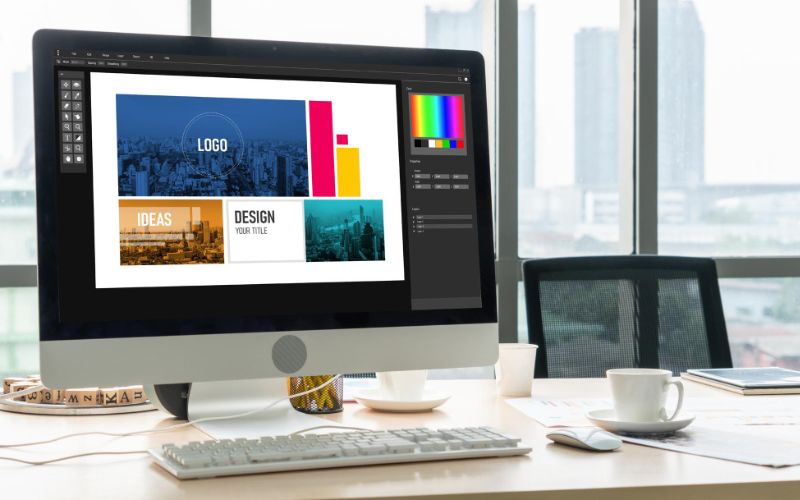Table of Contents
# Understand Color Theory
# Start with a Base Color
# Use a Color Wheel
# Consider Color Psychology
# Play with Shades and Tones
# Focus Contrast
# Test the Color Palette
# Get Inspiration
As renowned graphic designer Paula Scher once said, “Colors, like features, follow the changes of the emotions.” When it comes to graphic designing, choosing the right color palette is crucial. Colors play a significant role in conveying emotions and capturing attention in graphic design.
The right color palette can make or break a design, influencing how people perceive and respond to it. Creating the perfect color palette can be difficult, but with a few simple tips, you can easily create eye-catching designs.
In this blog, we will look at easy tips for color palette in graphic designing.
Understand Color Theory
Before you start experimenting with colors, it’s essential to have a basic understanding of color theory. Colors can be divided into
- primary
- secondary
- tertiary colors
Primary colors are red, blue, and yellow, while secondary colors are created by combining two primary colors. Tertiary colors (primary color + secondary color).
Also, color schemes are essential to know. Some popular color schemes include
- monochromatic (using shades of the same color)
- analogous (using hues on the color wheel that are near to one another)
- complimentary (using hues on the color wheel that are opposite one another).
Start with a Base Color
When creating a color palette, it’s helpful to start with a base color. The base color will set the overall mood and tone of your design. For example, if you’re designing a website for a wellness center, opting for calming pastel shades might be a good choice.
Use a Color Wheel
A color wheel is an excellent tool for choosing complementary colors that work well together. The primary, secondary, and tertiary colors are arranged in a circular pattern on the color wheel. By using a color wheel, you can easily identify colors that create a harmonious blend.
One simple technique is to choose colors that are next to each other on the color wheel also known as analogous colors.
If you want to know more about in depth how to apply it effectively then get yourself enrolled at graphic design training in Kolkata.
Consider Color Psychology
Colors evoke emotions and can influence how people perceive your design. Understanding color psychology can help you choose colors that align with the intended message or branding. For example, red is often associated with passion and energy, while blue is known for its calming and trustworthy qualities.
Take into account the context and target audience of your design. Different colors have different connotations in different cultures, so research about color symbolism is essential to avoid unintentional misunderstandings.
Play with Shades and Tones
Don’t limit yourself to just one color for your palette. Lighter shades can create a sense of airiness and space, while darker tones can add depth and intrigue to your design. Balancing contrasting tones can add visual interest to your overall composition.
Focus Contrast
Contrast is vital in creating visually appealing designs. It helps different elements stand out and guides the viewer’s attention. Consider using light and dark colors together to create a dynamic contrast. Similarly, pairing warm and cool colors can add depth and dimension to your design.
Ensure that your color palette provides enough contrast for text to be easily readable. High contrast between text and background is essential for readability, particularly in web design.
Test the Color Palette
Once you’ve created your color palette, it’s essential to test it across various mediums and screens. Colors can sometimes look different on different devices due to variations in color calibration. Test your design on different screens, such as laptops, tablets, and smartphones, to ensure it looks consistent and visually appealing.
Get Inspiration
If you’re still struggling to create a color palette, don’t be afraid to seek inspiration. Look at successful designs, websites, and professional portfolios to get ideas. Color inspiration can be found in nature, art, fashion, or even in a single object. Use these inspirations as a starting point and put your unique spin on them.
Are You Looking for The Best Graphic Design Courses in Kolkata?
If you are looking for the best graphic design courses in Kolkata then choose George Animatrix. We at George Animatrix will assist you in in-depth understanding of color psychology in graphic designing and how to create different projects using color psychology.
Conclusion
Creating a visually appealing color palette requires practice and experimentation. With these easy tips, you can create designs that are visually striking, harmonious, and aligned with the intended message. Remember to trust your instincts and have fun creating your color combinations!


